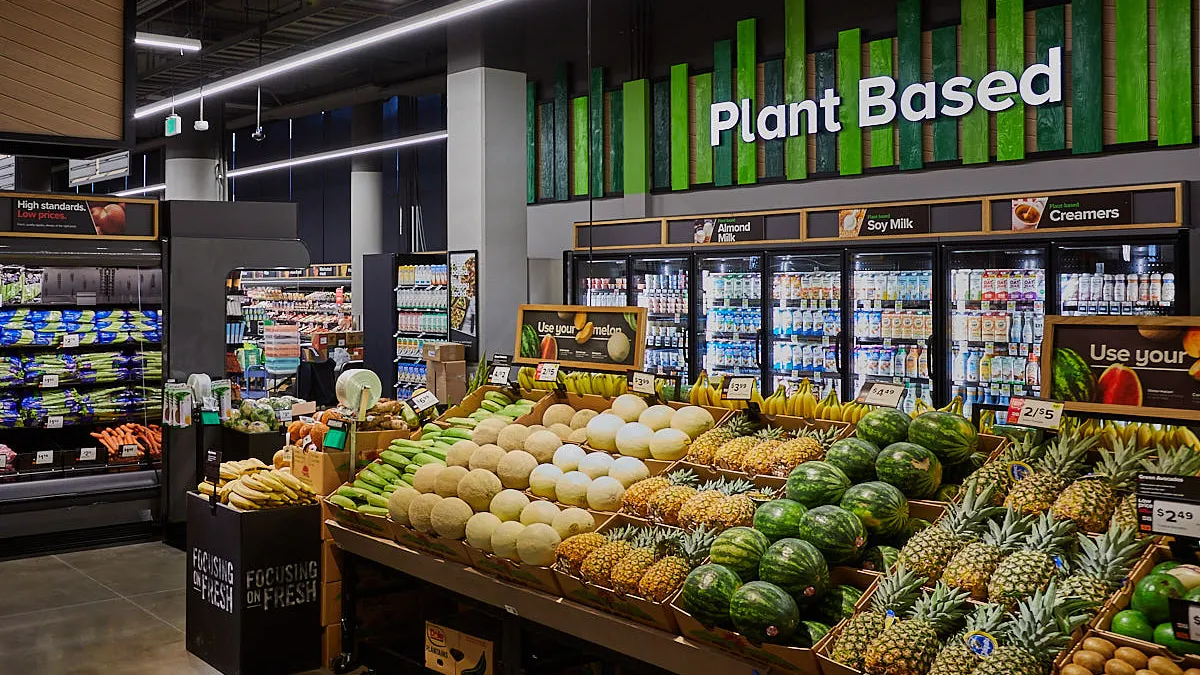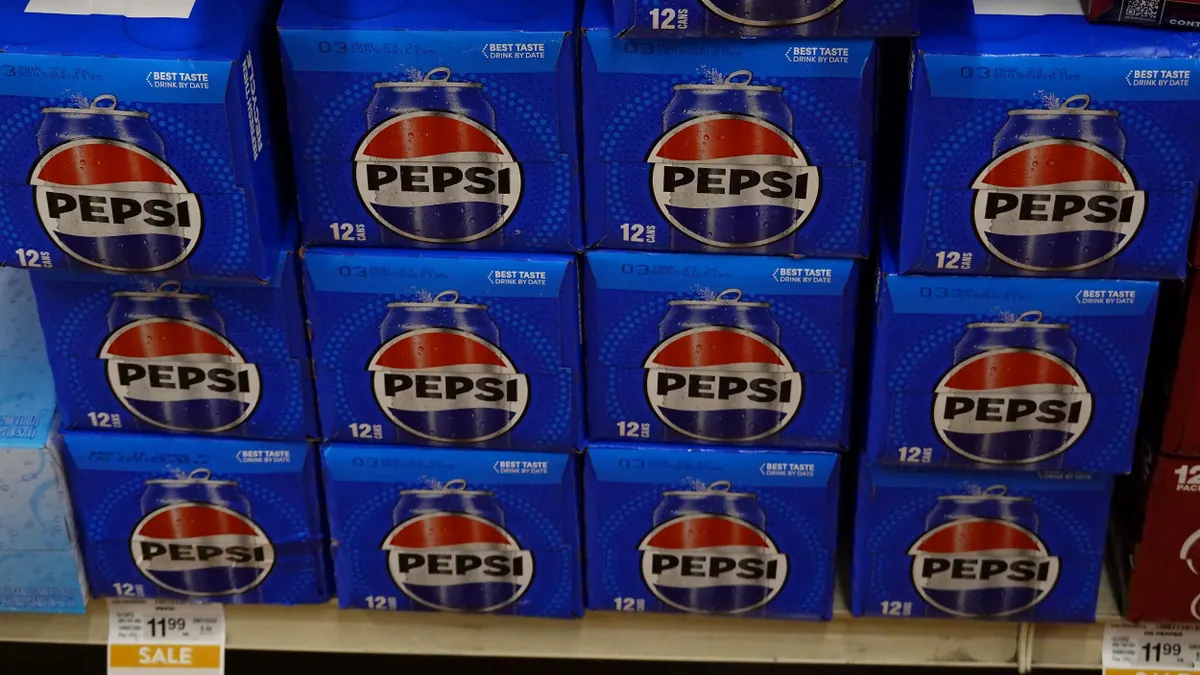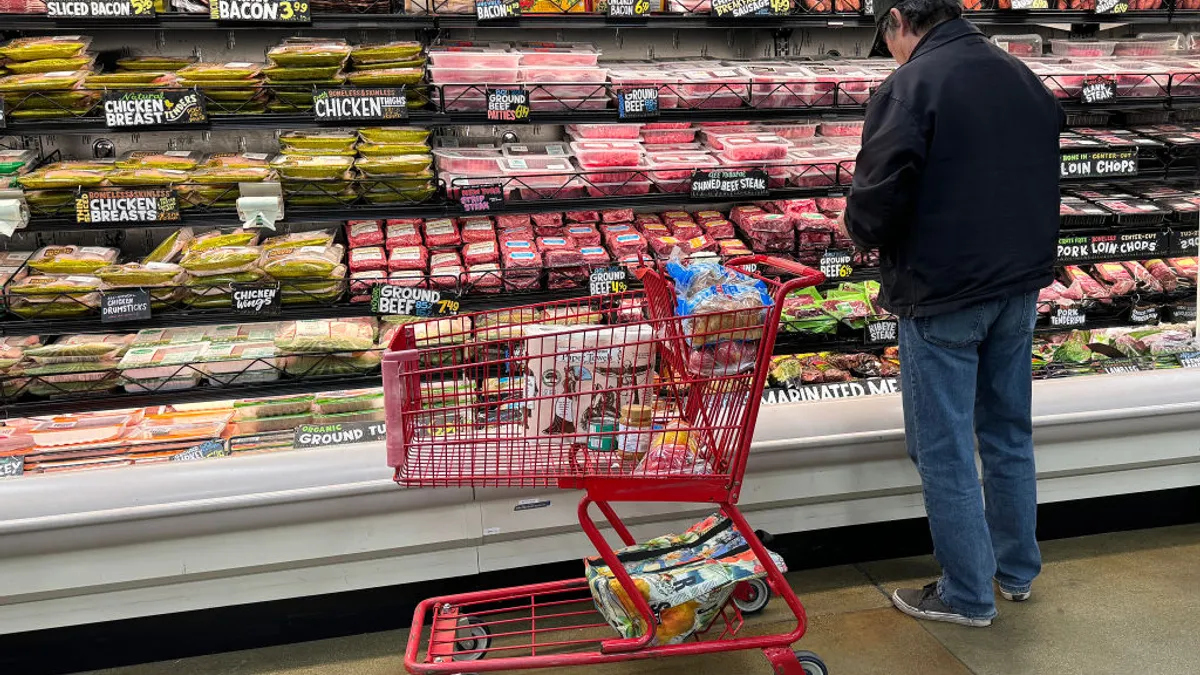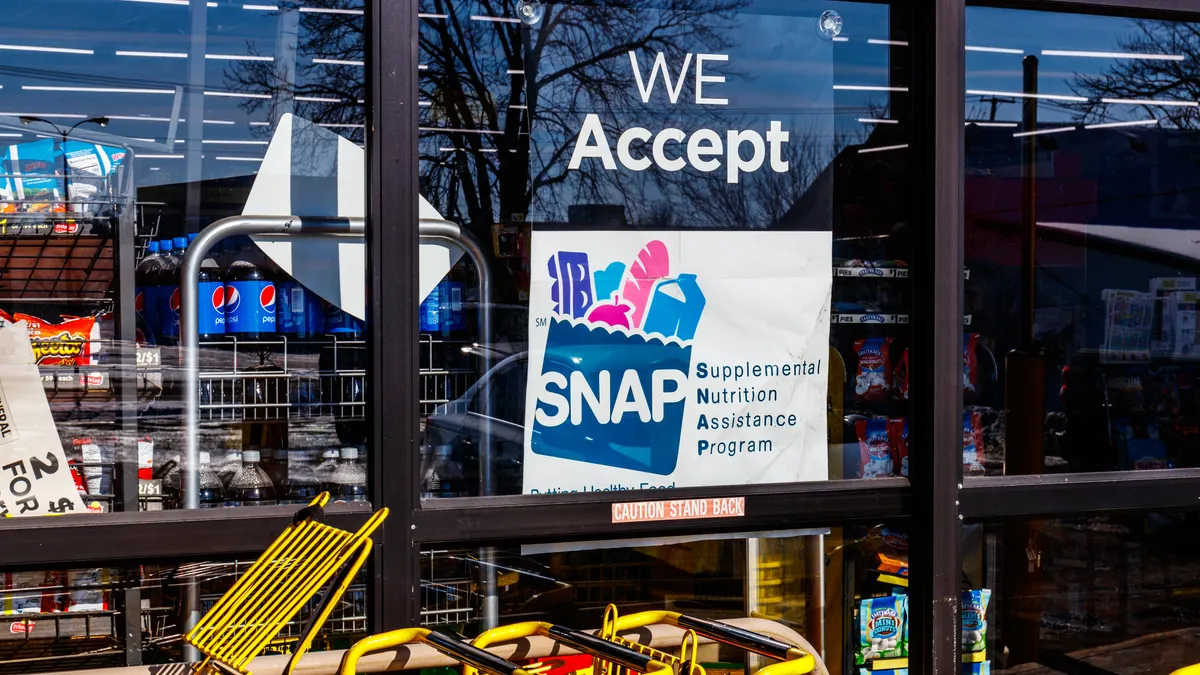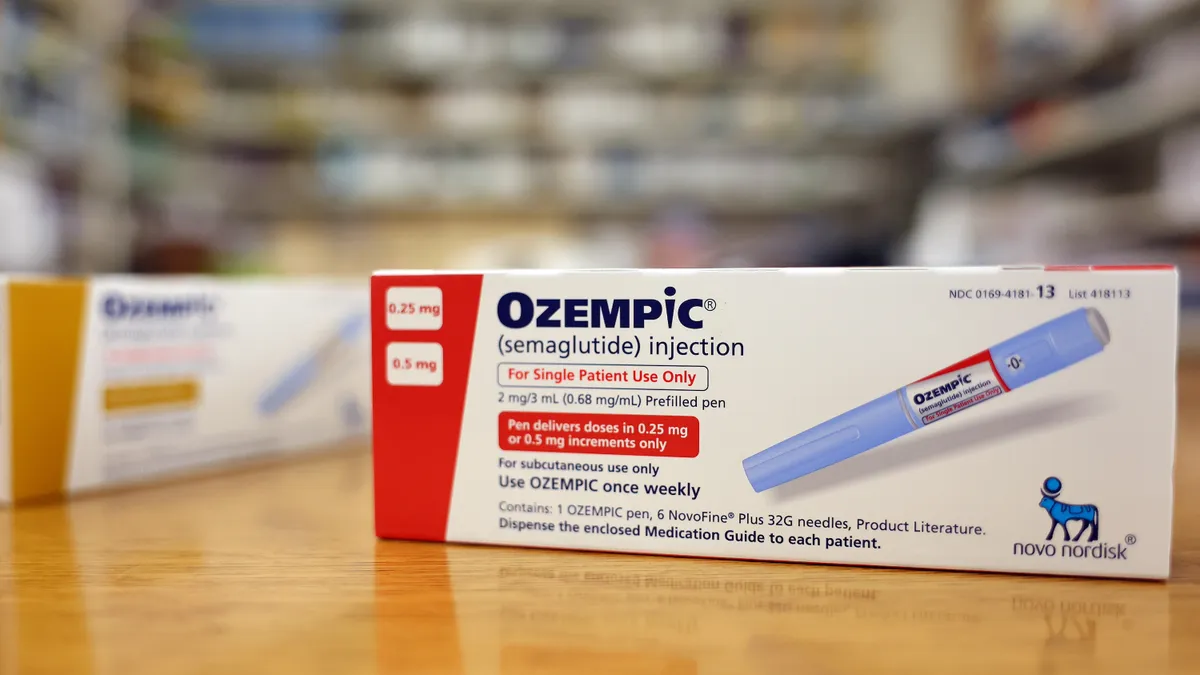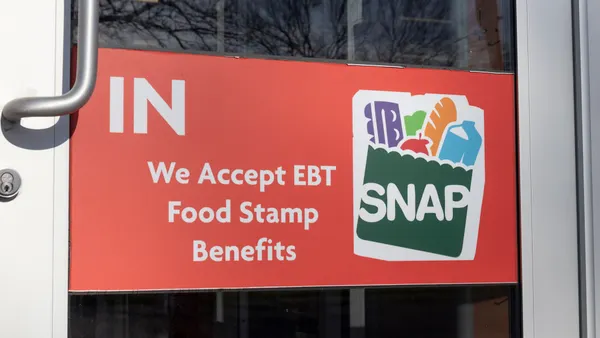"On Special" looks at top store categories and the retailers that specialize in them.
As grocers look to tap into the growth of plant-based products, The Giant Company is carving out — and spotlighting — space for its growing assortment of those items.
Shoppers at the grocery chain's newly opened Heirloom Market in Philadelphia's Fashion District, for example, will find a large department with a brightly lit "Plant Based" sign. The designated section has a wide range of frozen items like ice cream, meatless meat, pizzas and enchiladas and is flanked on both sides by packaged goods, including coconut chips and crunchy chickpeas.
Creating clearly designated sections for plant-based products in center store or in the produce aisle is one of the merchandising strategies the Ahold Delhaize banner has turned to in recent years, John Ruane, senior vice president of omnichannel merchandising, said in an interview.
"Every store to some degree has a plant-based offering but it's how we organized it and space we allocate to it that's probably different ... We're measuring the results to try to figure out what's the best way to do this," he said.
While some grocers, like Asda and Tesco, have rolled out consolidated sections with animal-free products, prominent spaces for plant-based products at major chains aren't widespread in the U.S. as retailers figure out if they want to integrate the items with their animal-based counterparts or not.
As Giant opens new stores and refreshes existing ones, providing more space for plant-based items has become a priority and an opportunity to burnish its healthy image, Ruane said.
 Best-sellers
Best-sellers
Center store, including packaged, frozen and dairy products, accounts for the biggest chunk of Giant's plant-based sales, Ruane said, which he partially attributes to the abundance of brands that have been around for more time.
At Heirloom Markets, plant-based milk sales have been "on fire" as the grocer has expanded the category to include different types of nut and soy milks, Ruane said. He believes the pandemic has boosted the popularity of coffee creamers, while dips and spreads have performed well for at-home entertaining.
The meatless category, particularly chicken and sausage products, has also seen a "lot of activity" with large CPGs like Kellogg adding options.
 What's trending?
What's trending?
Ruane, who is chairman of the Fresh Foods Leadership Council for the Food Industry Association, said the grocery industry is keeping an eye on the impact of plant-based foods on fresh.
Right now, meat substitutes account for the largest portion of the fresh business for plant-based products, but Ruane said he's expecting animal-free meat to migrate over to the frozen aisle, where the longer shelf lives will be more attractive to consumers. Already, he's seeing's Whole Foods Market and other retailers grow their frozen meat alternatives.
“When it's flash-frozen, it's really as good as it can be," he said.
He predicts frozen center store products will get mixed with frozen fresh products.
Tapping into plant-based as a healthy alternative
A few years ago, Giant made the strategic decision to increase its assortment of plant-based goods and tie it to the grocer's emphasis on healthy eating, Ruane said.
In spotlighting its plant-based assortment, Giant is looking to attract a wide range of shoppers, from those avoiding animal products to others trying flexitarian or vegetarian diets. Ruane expects more customers to discover plant-based products as brands offer more options.
Grouping plant-based items together and giving them more space is giving these products an opportunity to be seen and grow, Ruane said, noting that the approach has also helped the grocer attract new suppliers.
As grocers and consumers increasingly link plant-based foods to health and sustainability, sources have told Grocery Dive that brands and retailers should call out specific attributes, like high-quality ingredients that aren’t processed or don’t have additives and preservatives, to back up wellness marketing.
Playing around with placement
For the last three to four years, Giant has experimented with different placements for its plant-based selection to see what resonates with customers at different locations and formats, Ruane said.
In some cases, the chain has "embedded" items in the natural, health and organic aisles in center store. In others, the grocer has expanded the back perimeter for a designated section between animal-based meat and dairy or dropped the products into a section within the produce department.
With plant-based, Giant has received a range of customer input as it figures out which merchandising strategies work where, and for some, the changes have caused confusion about where to find items.
"We flex the section based upon who the customer is and how we anticipate with it what they want from us," he said, noting that Giant considers volume, customer demographics and footprint constraints when determining how to merchandise plant-based products.
For digital shoppers, Giant's online aisles have a plant-based subcategory under the produce, meat, seafood and dairy categories. Plant-based options have also been added to the grocer's online content around meal solutions.
Finding success at Heirloom Market stores
When Giant first started focusing on plant-based products, it made its biggest initial push to expand the assortment with dedicated sections at its urban Heirloom Market stores.
Shoppers at Heirloom Market stores have given positive feedback on the expanded variety and grouping of plant-based items together. “I think they appreciate the fact that we've made that statement. Otherwise, they’re on a hide-and-go-seek trying to find it," he said.
With the small "modern neighborhood market" format, the grocer has been able to tap into younger, affluent and urban shoppers, who have a higher propensity to shop plant-based products, based on Giant's consumer insights, Ruane said.
“[The format] is the best performing in terms of percent of sales to the store of all the stores that we have," Ruane said.
Managing plant-based categories
Category management can be one of the trickier areas for plant-based foods, which are expanding across categories. Giant usually looks at where a product is displayed — ambient, frozen or refrigerated — when deciding, Ruane said.
"In a perfect world, I would say one person managing, as well as extreme expertise, would probably be optimal. We're not there yet," he said.
Because of space constraints with physical stores, carving out room for plant-based products often leads grocers to cut assortment elsewhere. For Giant, some "traditional categories" have shrunken at certain stores to make room for plant-based items, Ruane said.
"If you looked at a sales-to-space analysis, you'd say, 'Well, it doesn't deserve all that room,' but it's also an emerging category. And one of the ways we look at category management here is we're looking at things that are small that are growing quickly to try to get ahead of the trends and really give the customer an extra reason to shop with us," Ruane said.
He continued: “I think we've probably erred on the side of going too much room versus too little [for plant-based]. ... It really becomes this curated view of, 'What's the right solution for that particular store, the volume, demographic, income levels, ethnicity, etc.?'"
Future growth for plant-based
At 46 feet, the plant-based department at Giant's flagship store in Philadelphia is the chain's largest. The 65,000-square-foot store, which opened last March and drew inspiration from the Heirloom Markets in the city as well as other places, has just over 460 SKUs of plant-based products, with meatless items grouped together instead of with animal-based meat, and dedicated cases for plant-based milk and creamers next to the produce section.
Similar to Heirloom Markets in Philadelphia, the flagship store is located in an area that has an affluent and highly educated consumer base.
As Giant continues to renovate and open stores, Ruane said the company is "expanding space as well as creating adjacencies better than we had in the past.”
“I think that you'll probably see even larger statements than we've done at Heirloom as we do some of our larger, prototypical [stores]," Ruane said, noting that its recently opened store in Doylestown, Pennsylvania, has a large plant-based section that is "doing extremely well" and exceeding targets.
"We can lever this based upon who the customer is and what we think they want."
The state of plant-based food sales in the U.S.
- Dinner sausage substitutes (roughly $129.6 million) brought in the most dollar sales for fresh and refrigerated meat alternatives, which totaled nearly $481 million, during the last 52 weeks ending on Dec. 26, 2021, according to data gathered by Chicago-based market research firm IRI.
- Among frozen meat, poultry and seafood alternatives, which hit $727.9 million for the same time period, meat alternatives accounted for approximately 63% ($459.5 million) of dollar sales, followed by poultry alternatives ($216.7 million) and processed poultry alternatives ($51.5 million), per IRI.
- Among plant-based milk, which totaled nearly $2.2 billion during the same time period, almond milk accounted for the most dollar sales ($1.5 billion), followed by oat milk ($385 million) and soy milk ($151 million), according to IRI.
Correction: A previous version of this story listed a former role for John Ruane at The Giant Company. He is senior vice president of omnichannel merchandising.


